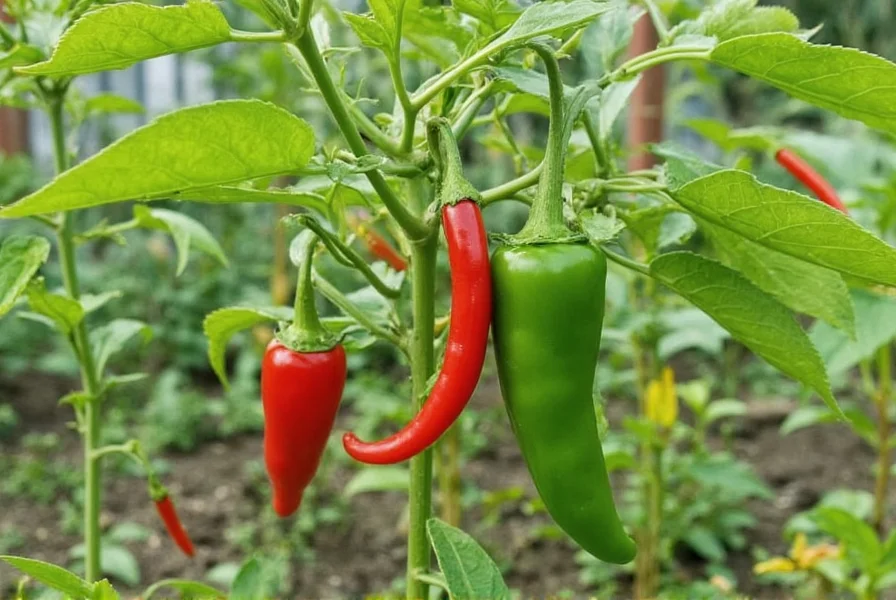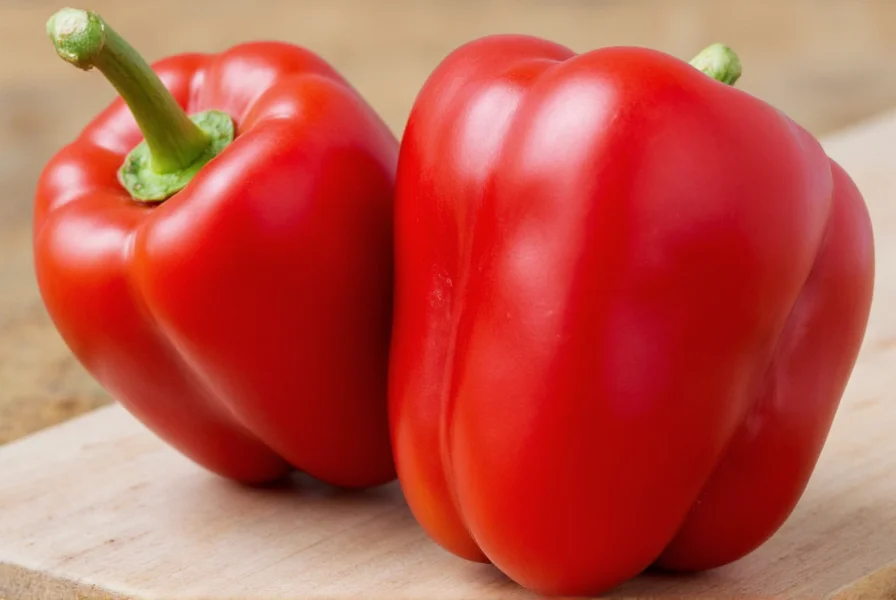The Marconi red pepper is a sweet, elongated Italian heirloom pepper variety known for its distinctive tapered shape, vibrant red color when mature, and mild, fruity flavor. Unlike standard bell peppers, Marconi peppers have thinner walls, making them ideal for roasting, frying, and preserving. They typically measure 6-8 inches long with a curved neck and ripen from green to deep red, offering a complex sweetness with subtle earthy notes and minimal heat (0-500 SHU). Chefs prize Marconi peppers for Mediterranean cuisine, especially in Italian and Spanish dishes where their delicate texture absorbs flavors beautifully without becoming mushy.
Understanding the Marconi Red Pepper
Originating from the Liguria region of Italy, Marconi red peppers (Capsicum annuum) belong to the sweet pepper family but possess unique characteristics that distinguish them from common bell peppers. These peppers grow on compact plants that reach 2-3 feet in height, producing fruits that start green and gradually transition through yellow and orange stages before maturing to a rich, deep red. The distinctive curved shape—reminiscent of a bull's horn—gives them their Italian name "peperone di Carmagnola" after the town where they were traditionally cultivated.

Flavor Profile and Heat Level
Marconi red peppers register between 0-500 Scoville Heat Units, placing them firmly in the sweet pepper category with virtually no noticeable heat. Their flavor profile features:
- A pronounced sweetness with subtle fruity notes
- Earthy undertones that intensify when roasted
- Thinner walls compared to bell peppers (1/8 inch vs 1/4 inch)
- Higher sugar content that caramelizes beautifully during cooking
When comparing Marconi red pepper vs bell pepper, the differences become apparent in both texture and culinary application. While bell peppers maintain a crisp texture even when cooked, Marconi peppers soften more quickly while retaining their shape, making them superior for dishes requiring tender but intact peppers.
Culinary Applications
Chefs specializing in Mediterranean cuisine consider Marconi peppers indispensable for authentic preparations. Their thin walls and high sugar content make them particularly well-suited for:
| Cooking Method | Recommended Preparation | Best Pairings |
|---|---|---|
| Roasting | Whole over open flame until charred, then peeled | Olive oil, garlic, balsamic vinegar |
| Frying | Sliced lengthwise and shallow-fried in olive oil | Eggs, anchovies, capers |
| Preserving | Packed in olive oil with herbs after roasting | Thyme, rosemary, bay leaves |
| Grilling | Whole or halved over medium heat | Lemon zest, fresh herbs |
One traditional Italian preparation involves roasting Marconi red peppers until the skin blisters, then placing them in a paper bag to steam before peeling. This technique enhances their natural sweetness while creating a delicate texture perfect for antipasti platters or as a pizza topping.
Growing Marconi Peppers
Gardeners appreciate Marconi peppers for their relatively compact growth habit and extended harvest period. These peppers require:
- Full sun exposure (6-8 hours daily)
- Well-draining soil with pH between 6.0-6.8
- Consistent moisture (1-2 inches weekly)
- 75-85°F temperatures for optimal growth
Unlike many sweet peppers, Marconi varieties typically mature in 65-75 days from transplanting. Gardeners should harvest them when they reach full size but remain slightly firm, as overripe peppers may develop cracks. For those interested in growing Marconi Italian sweet peppers, starting seeds indoors 8-10 weeks before the last frost yields the best results.

Substitutes and Storage
When Marconi peppers aren't available, suitable alternatives include:
- Cubanelle peppers (similar sweetness and thin walls)
- Española peppers (mild heat with comparable shape)
- Red bell peppers (thicker walls but similar flavor)
- Shishito peppers (when young and green)
For proper storage, keep unwashed Marconi peppers in the crisper drawer of your refrigerator for up to 2 weeks. For longer preservation, roast and pack them in olive oil with herbs, which maintains their flavor and texture for 3-4 months. Freezing roasted Marconi peppers works well for cooked applications but alters their fresh texture.
Nutritional Benefits
Marconi red peppers deliver impressive nutritional value per 100g serving:
- Vitamin C: 190% of daily value (higher than oranges)
- Vitamin A: 96% of daily value (from beta-carotene)
- Vitamin B6: 20% of daily value
- Dietary fiber: 2.4g
- Only 26 calories
Their deep red color indicates high lycopene content, an antioxidant associated with heart health and reduced inflammation. Unlike hotter pepper varieties, Marconi peppers provide these benefits without capsaicin-induced digestive discomfort, making them suitable for sensitive eaters.
Frequently Asked Questions
Are Marconi red peppers spicy?
No, Marconi red peppers are not spicy. They register between 0-500 Scoville Heat Units, placing them firmly in the sweet pepper category. Their flavor profile emphasizes sweetness with subtle fruity notes and earthy undertones rather than heat, making them suitable for those who prefer mild peppers.
How do I use Marconi peppers in cooking?
Marconi peppers excel in roasted, fried, and preserved preparations. Their thin walls make them ideal for roasting whole over an open flame, then peeling and serving with olive oil. Chefs often fry them in olive oil with garlic for Italian antipasti, stuff them for baking, or preserve them in oil with herbs. Unlike bell peppers, they maintain their shape while becoming tender when cooked.
What's the difference between Marconi peppers and bell peppers?
Marconi peppers have a distinctive tapered shape compared to the blocky form of bell peppers. They feature thinner walls (about half the thickness), higher sugar content, and a more complex flavor profile with subtle earthy notes. While both are sweet peppers, Marconi varieties soften more quickly during cooking while maintaining their shape, making them superior for roasting and frying applications where bell peppers might become too crisp or too mushy.
Where can I buy Marconi red peppers?
You can typically find Marconi red peppers at farmers' markets during summer and early fall, specialty grocery stores, Italian markets, and increasingly in well-stocked supermarkets. Some CSA (Community Supported Agriculture) programs feature them during peak season. For gardeners, numerous seed companies offer Marconi pepper seeds for home cultivation, with plants producing harvestable peppers approximately 65-75 days after transplanting.











 浙公网安备
33010002000092号
浙公网安备
33010002000092号 浙B2-20120091-4
浙B2-20120091-4